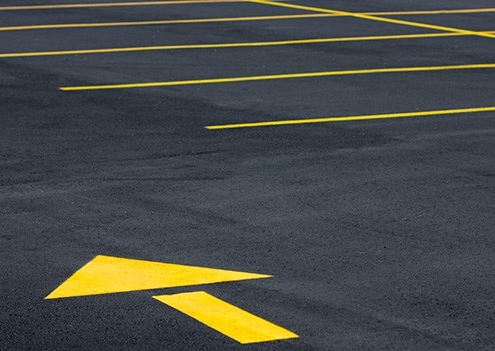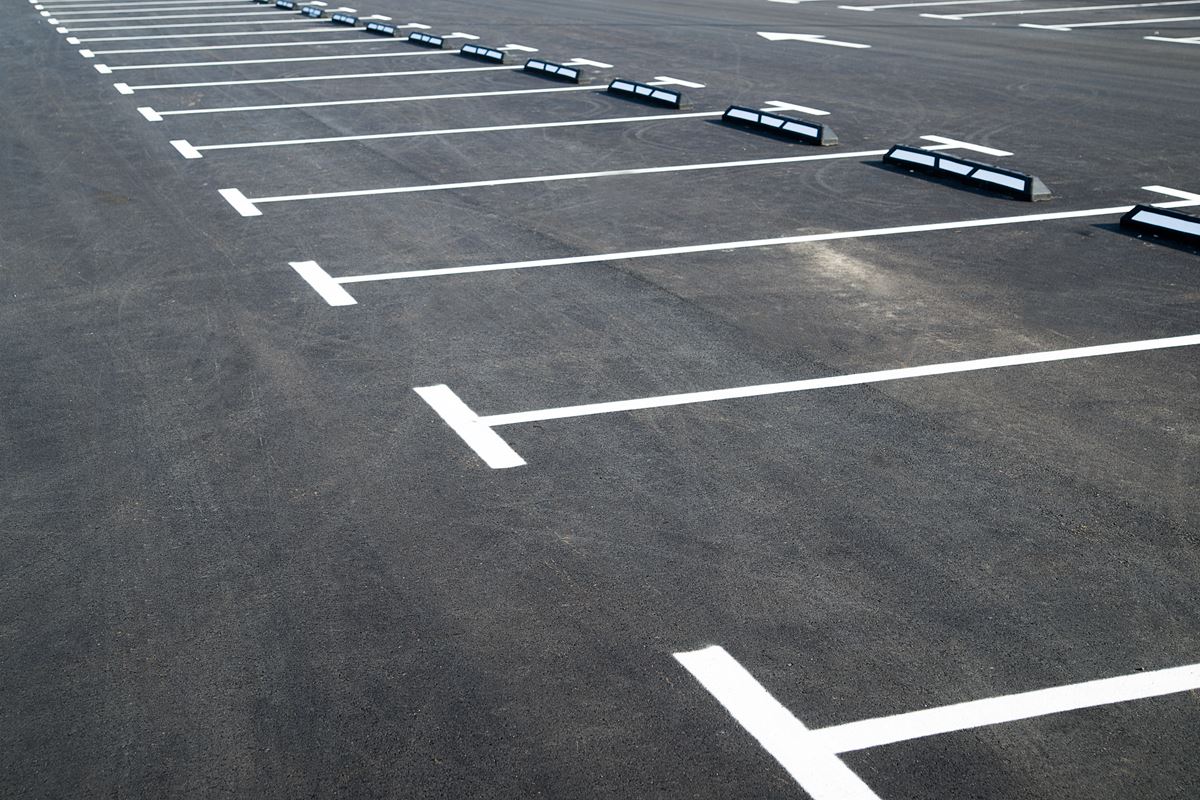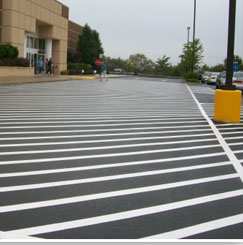A Comprehensive Guide to the Finest Practices in Roadway Painting for Public Freeways
Effective roadway painting is an essential part in ensuring public security and optimal web traffic circulation on highways. This discussion will certainly explore the most effective techniques in this field, including the choice of appropriate materials and progressed application strategies. It is vital to take into consideration not only the instant influence of roadway markings but likewise their long-lasting upkeep and visibility under varying environmental problems. Recognizing these factors can considerably affect the efficiency of roadway markings, yet lots of are unaware of the nuances involved. As we think about these ideal techniques, the implications for mishap reduction and general roadway use will certainly come to be evident.
Importance of Roadway Paint
Roadway paint plays a critical duty in keeping web traffic security and effectiveness, with studies indicating that well-marked roadways can reduce crashes by approximately 30%. The clear difference of lanes, pedestrian crossings, and various other important markings serves to guide pedestrians and drivers, cultivating a foreseeable environment on the road. This predictability is crucial for reliable navigation and helps decrease complication, which can frequently cause mishaps.
Additionally, roadway markings are critical in conveying vital info, such as speed restrictions and directional support. They enhance presence, particularly in adverse weather or throughout nighttime driving. The existence of reflective products in roadway paints further boosts exposure, allowing motorists to determine crucial markings that affect their actions when traveling.

Choosing the Right Materials
Choosing suitable materials for roadway painting is vital to accomplishing efficient and durable markings. The option of products straight influences the visibility, long life, and safety and security of roadway markings. Typical choices include water-based paints, solvent-based paints, and thermoplastic materials, each with special buildings and applications.
Water-based paints are eco friendly, quick-drying, and suitable for most weather, making them ideal for metropolitan settings. Nevertheless, they may call for more frequent maintenance because of damage. Solvent-based paints, while offering exceptional attachment and longevity, can posture environmental and health problems due to volatile organic compounds (VOCs)
Polycarbonate products are progressively prominent due to their durability and resilient efficiency. These products are heated prior to application, enabling for a strong bond with the sidewalk. Their reflective residential properties enhance exposure, particularly at evening.
When selecting materials, aspects such as web traffic quantity, climate problems, and the specific kind of road should be taken into consideration. Conducting detailed study and consulting with suppliers can aid ensure that the picked materials fulfill neighborhood regulations and standards, inevitably adding to more secure roads and enhanced chauffeur awareness.
Effective Application Strategies
Reliable application strategies play a critical duty in making sure that road markings achieve optimal performance and longevity. The approach of application dramatically affects the adhesion, presence, and longevity of the markings. High-pressure airless spraying is frequently preferred for its performance and capability to produce smooth, also lines. This technique minimizes overspray and makes sure that the paint is applied evenly, which is necessary for maintaining roadway security.
Before application, it is crucial to prepare the surface area effectively. This consists of cleaning the road of oil, debris, and wetness to improve attachment. Additionally, temperature level and moisture should be thought about throughout the application process to accomplish the very best results.
Utilizing the ideal equipment is also important. Line stripers equipped with adjustable sizes permit precise markings that adhere to regulative criteria. It is important to calibrate the devices consistently to guarantee consistency in paint thickness.
Timing and Environmental Elements
Appropriate timing and consideration of environmental variables are essential for the effective application of roadway markings. The efficiency of road paint largely depends on moisture, wind, and temperature problems at the time of application. Ideally, temperatures need to be in between 50 ° F and 85 ° F(10 ° C to 29 ° C) for ideal adhesion and healing. When temperature levels are as well low, paint might not treat correctly, leading to early wear and decreased visibility.
Humidity levels likewise play an important role; high humidity can prevent drying out times, while exceedingly dry problems might create rapid dissipation of solvents, impacting the paint's efficiency. Wind can present impurities and debris, potentially endangering the quality of the markings. It is recommended to choose calm days for application.

Setting up painting jobs throughout beneficial climate conditions can considerably boost the longevity and efficiency of roadway markings - Road painting near me. By very read review carefully evaluating these elements, agencies can guarantee that road markings are applied effectively and keep their presence and longevity over time.
Maintenance and Durability Approaches

One effective strategy is to apply an organized painting program based upon traffic quantity and environmental factors - Parking lot line blog here striping. Higher traffic areas might require even more regular maintenance to neutralize the erosive effects of automobiles and climate problems. In addition, the usage of resilient products, such as thermoplastic and epoxy paints, can substantially extend the life-span of roadway markings
Cleaning road surfaces to eliminate particles and contaminants is an additional important facet of upkeep. This ensures ideal bond of brand-new paint and boosts the general performance of the markings. Using advanced technologies, such as automatic tracking systems, can simplify the tracking process and optimize maintenance timetables.
Including these strategies will certainly not only boost the visibility and safety and security of roadway markings yet additionally lower long-lasting prices associated with regular repainting and fixings. (Parking lot line painting)
Final Thought
View Line painting Abbotsford in a full screen map
The selection of suitable materials, integrated with reliable application techniques and factor to consider of ecological factors, contributes to the sturdiness and exposure of road markings. Normal upkeep and examinations additionally prolong the life use this link expectancy of these markings, eventually minimizing accidents and improving overall roadway usability.
The presence of reflective products in road paints further enhances exposure, permitting vehicle drivers to recognize crucial markings that influence their actions on the road.
Choosing appropriate products for roadway painting is vital to attaining durable and efficient markings.While the initial application of roadway markings is essential, ongoing upkeep strategies are equally essential to ensure their longevity and exposure. In addition, the use of sturdy materials, such as thermoplastic and epoxy paints, can significantly expand the life-span of road markings.
The option of proper products, incorporated with reliable application methods and factor to consider of ecological variables, adds to the toughness and visibility of roadway markings.